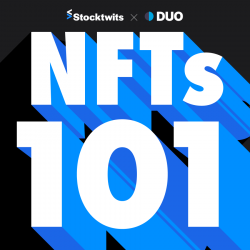Data: it’s a dream for nerds, traders, and experienced users, but for the rest of us it can feel like a confusing mess of information. In the world of NFTs, you will hear a lot of new terminology. Some of it might feel similar to stock trading, due to the high number of “flippers,” or people who buy NFTs to sell them for a higher price. However, it is important to understand what these terms mean in relation to NFTs, and how they might differ from traditional trading. Let’s look at some of the data points and lingo you should be aware of when looking at an NFT project.
Primary Sales/Market – This is also referred to as the “mint” or when anyone is first able to purchase an NFT, usually at a set price. The primary sales would be the total amount that was paid to the creator from this initial sale of NFTs as the new owner of the NFT is paying the creator directly.
Secondary Sales/Market – This is measured as any transaction after the mint or primary sale. Trades or purchases between individuals make up the secondary market, and the higher it is, the more popular and liquid the market for this NFT project is.
Floor – The “floor” or “floor price” of a project is simply the lowest price at which you can buy an NFT from that project on the secondary market. It is the most popular metric for tracking a project’s performance over time and its relative success compared to others.
Gas Fees – Oh the dreaded gas… This is the fee you pay to add your transaction to the blockchain, this can vary widely depending on which blockchain you are on. For example on Solana or Cardano you will spend a few cents, whereas Ethereum ~$50 is the best you could hope for and it’s often $100+ regardless of the price of the NFT. Remember, the more transactions happening at one time, the higher the gas fees, so during a popular drop or high traffic time you might have to pay outrageous gas prices.
Average Price – This is a self explanatory one; nevertheless, very valuable in determining the health of a project. Simply, it is the average price of all the NFTs sold for this collection. The reason this matters is often in relation to the floor price. If the floor is $50 and the average price is $100, there is a good chance to buy a cheap NFT and flip it for a profit. If you are able to find it, Median Price can be an even better indicator, as Average Price can be skewed by high-priced buys of rare NFTs in a collection, which may have a much higher price than more common versions.
Volume (# NFTs / Total $)– This comes up a lot, and unless you are familiar with trading it may not make sense. Volume is just the total amount of value traded in a period of time. This may be represented by the number of NFTs that have been sold or purchased, or it could be represented in total dollar value. Pay attention to these two numbers together, because you could have high monetary volume, with one big NFT sale, or high number volume with thousands of small sales.
Tx or Transactions – The TX, as it’s sometimes referred to, is simply the number of transactions for the specific collection of NFTs. Since NFTs can be purchased in large amounts all at once, the number of transactions might not be the same as the number of buyers. This is a good metric to track if you want to see how many NFTs on average are being purchased. You can look at the number of transactions and compare that to the number of buyers. This can tell you if people are coming back to buy multiple NFTs from this project.
Buyers – While this might seem simple at first glance, it’s important to know that “Buyers” strictly means the number of unique wallets that have purchased an NFT. It is totally possible to have many unique wallets that you own; however, with the decentralized anonymity of the blockchain, it is difficult at best to track which wallets belong to an individual unless they announce it. This means you’ll never be able to track the number of unique people buying an NFT, but you can track how many different wallets these NFTs are being held in.
This should give you a good start to understanding all the numbers that are displayed on NFT data collection sites like Stocktwits, CryptoSlam, and Nonfungible. You’ll often see these terms on marketplaces like OpenSea, JPG Store, Magic Eden, FTX.US as well. As always, the best way to determine a project’s success is to spend time talking to other community members. It may seem overwhelming at first, but people involved in NFT communities are often very open to explaining NFT terminology and giving you their assessments of existing projects.
Disclaimer: This transcript was auto-generated using AI-powered software.
About NFTs 101
Stocktwits has teamed up with Duo, the first play-to-earn humor-based social NFT game built on Cardano, to explain the emerging market of NTFs.
Hosted By:
Duo Duo Website
Duo is the an NFT game built on Cardano where you match funny prompts & punchlines to earn crypto & NFTs!

